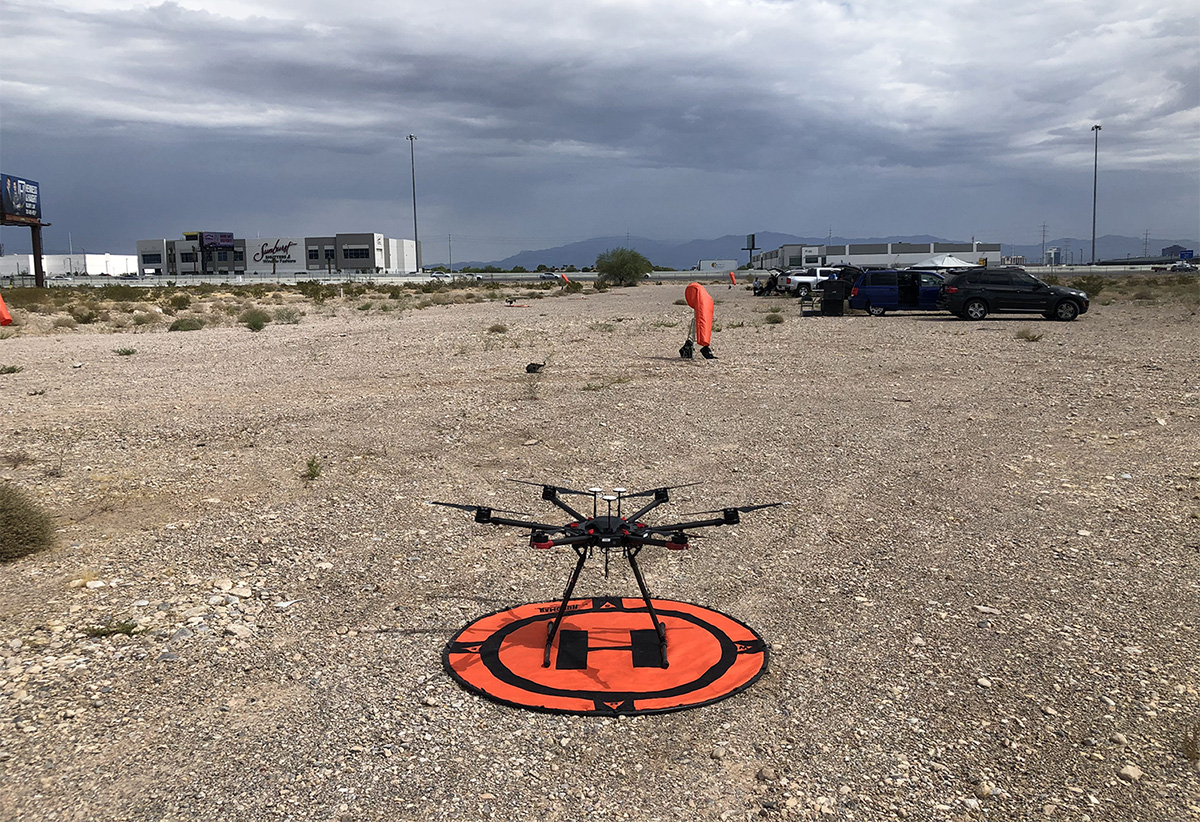AggieAir Partners with FAA & Industry Experts to Develop Drone Traffic Management System
AggieAirTM recently spent 10 days in Las Vegas, Nevada working with the FAA and other industry experts to create safety regulations and programs for drone services in the future. As a research center of the Utah Water Research Laboratory at Utah State University, AggieAir has been specializing in the development and use of small uncrewed aerial systems for collecting scientific imagery and data for the past 13 years.

AggieAir's UAV Matrice 600 Pro preparing for take-off in Las Vegas, Nevada
In 2017, the FAA established the Unmanned Traffic Management Pilot Program (UPP), with the intent to support the implementation of expanded unmanned traffic management. As more businesses explore the possibility of utilizing drones for purposes like delivery, surveillance, and remote sensing, there will be, and already is, a significant increase in drone traffic. UPP was designed to provide practical data that will allow stakeholders to see and understand the level of investment needed for safe UAS traffic management.
The UPP program identified three test locations, and invited AggieAir to participate in the Las Vegas, Nevada demonstration led by the Nevada Institute for Autonomous Systems (NIAS). AggieAir originally worked with the NIAS when both were selected to participate in a NASA-led airspace demonstration in Reno, Nevada earlier this year.
The UPP project aims to develop UAV enterprise services infrastructure. This cloud infrastructure will support expanded Unmanned Aerial Traffic Management, in the hopes that enterprise services will support the sharing of information between organizations that promotes cooperative separation and situational awareness.
Over 10 days and for more than 25 flights, AggieAir pilot Hunter Hixon flew the research center’s UAV Matrice 600 Pro, a multi-rotor drone, as one of three drone pilots at the demonstration.
These flights demonstrated that multiple drone operations could safely be completed below 400 feet in the airspace where FAA air traffic services are not provided. The FAA also practiced a key element of unmanned traffic management called UVRs, or UAS volume reservations, where notifications of higher priority air or ground activities are shared with drone operators so they can determine if they need to land their drone or avoid a specific area.
AggieAir Director Cal Coopmans commented on the project, saying “The UPP is an important milestone on the way to an automated, safe, productive, and integrated airspace for manned and unmanned aircraft alike. USU's representation in this program is a welcome acknowledgment that we are at the cutting edge of unmanned systems flight and safe airspace access. AggieAir is so happy to work with NIAS and all the other partners, especially Avision, Switch, and Avisight, on the UPP and participate in the aerial future of the US and beyond!”
AggieAir was proud to work with all of the Nevada UPP partner companies: Switch, Uber Elevate, AiRXOS a GE company, Avisight, Avision Robotics, ANRA Technologies, Praxis Aerospace Concepts, Telesis Communications Services, RelmaTech, the City of Las Vegas, City of Henderson, City of Reno, Town of Searchlight, and Nevada State College.
###
Contact: Cal Coopmans, cal.coopmans@usu.edu
Writer: Brittanie Carter, brittanie.carter@usu.edu,435-797-7176








